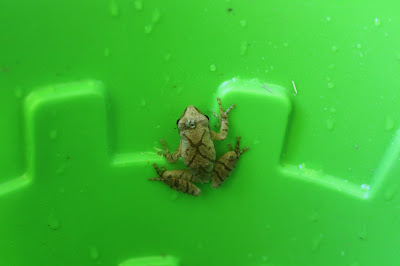Donald Trump became president of the United States
for a variety of reasons that voters might have found intriguing during his
campaign. One of his biggest selling points was his disdain for Chinese
manufacturers and American outsourcers as he believes they pose threats to
good-paying manufacturing jobs here in America. That was a populist rallying
cry for blue-collar workers which caused many traditionally-Democratic areas
and states to turn Republican at the polls in November.
A lot of folks who count themselves as big thinkers
– economists, the media, professors, and the corporatists on Wall Street --
have publically stated that fears over China taking our jobs are misguided and
that the loss of jobs to overseas competitors is almost mythological. They believe
that we no longer need to emphasize the manufacture of goods because we’ve
become and/or are better off as a high-tech service economy; that most
manufacturing job losses were attributed to robots and productivity; we’re in a
global economy that knows no borders; and consumers are better served by lower
prices.
That wrong-headed world view about manufacturing
posed by those folks, who have a huge impact on public policy, are precisely
why manufacturing has been hurting in America. Rules, regulations, taxes,
damaging trade agreements, and more that they have helped to develop have
crippled the producers that are an absolutely necessary part of our nation’s
health.
A service economy doesn’t create wealth. A mixed economy
with strong manufacturing, mining, and farming sectors does – the workers,
plants, and equipment that make something out of nothing drive a nation’s
wealth. For every $1 spent in manufacturing, an extra $1.40 is added to the
economy. That’s twice the multiplier effect seen in service.
For that reason, and the obvious one that I have a deeply
vested interest in manufacturing, I side with the blue collar view of China’s
threat. I’ve seen it firsthand. We live it every day at the plant…and so do
other workers in many factories across the region.
As an example, there is a Chinese manufacturer that
ripped-off some of the swimming pool steps and ladders that we currently make.
The look, feel, design, and even the assembly manuals were all copied to a “t”
– except for the name and our one patented portion of the products. Some would
say that imitation is the sincerest form of flattery, but that doesn’t make you
feel good when you’re certain that the business lost to these cheap goods would
keep 24 people busy for two-and-a-half months ever year.
Going further back in time, in the 1970s my dad
invented the flexible fuel funnel that you see in almost every garage. When
that patent expired in the late-1980s we lost that business because we couldn’t
compete with overseas plants, their lower input costs and their ability to fill
shipping containers with cheap goods. We haven’t made any of these ubiquitous
tools since 1990.
We aren’t alone.
Consider the origin story behind the Made in
America Store. That awesome enterprise, which has garnered national acclaim and
has become something of a tourism destination, was founded by Mark Andol as a
means to overcome the foreign monster that was hurting his first business,
General Welding & Fabricating. Low-cost, low-quality Chinese competition
forced him to close 2 of his 5 plants and layoff a third of his workforce in
2009.
Mark knew that he needed to “Save Our Country First” (the store’s slogan), so he opened the first of his retail locations in 2010 to showcase goods made by his fellow domestic producers. That store now has multiple locations and carries 7,000 American-made products. While the stores prosper, the back story is still there: Mark still struggles to keep his skilled machinists and welders busy at his factories because of China.
Mark knew that he needed to “Save Our Country First” (the store’s slogan), so he opened the first of his retail locations in 2010 to showcase goods made by his fellow domestic producers. That store now has multiple locations and carries 7,000 American-made products. While the stores prosper, the back story is still there: Mark still struggles to keep his skilled machinists and welders busy at his factories because of China.
Or, how about General Motors? The one-time Harrison
Radiator – Delphi plant in Lockport is busy for sure, employing 1,400. But,
that number is only a portion of what it was in its heyday. Some of that is
attributed to changes in business models and greater productivity, but hundreds
of jobs were no doubt lost to Asian rip-offs. I know engineers and managers who
worked there in the 1980s and 1990s who worked with foreign “partners” that
ended up stealing ideas and technology and becoming competitors, even going so
far as to commit espionage with concealed cameras.
Then there’s the matter of tire dumping being
committed by China for years. The U.S. imported 8.9 million truck and bus tires
from China in 2015 worth $1.07 billion, up from 6.3 million units worth $885
million in 2013. Almost all of those tires came in below market rates and were
unfairly subsidized by the Chinese government.
Last fall, the US government finally woke up to it
and placed tariffs on Chinese tires. But the damage was done. There are 8
plants in the US that make truck tires – one of them, Sumitomo Rubber USA, is
right here in Tonawanda.
You see, the specter of China is not some made-up
bogeyman. It’s real. China manufacturers are taking jobs from Western New York
and taking money out of local families’ pocketbooks.
From the 03 April 2017 Greater Niagara Newspapers


